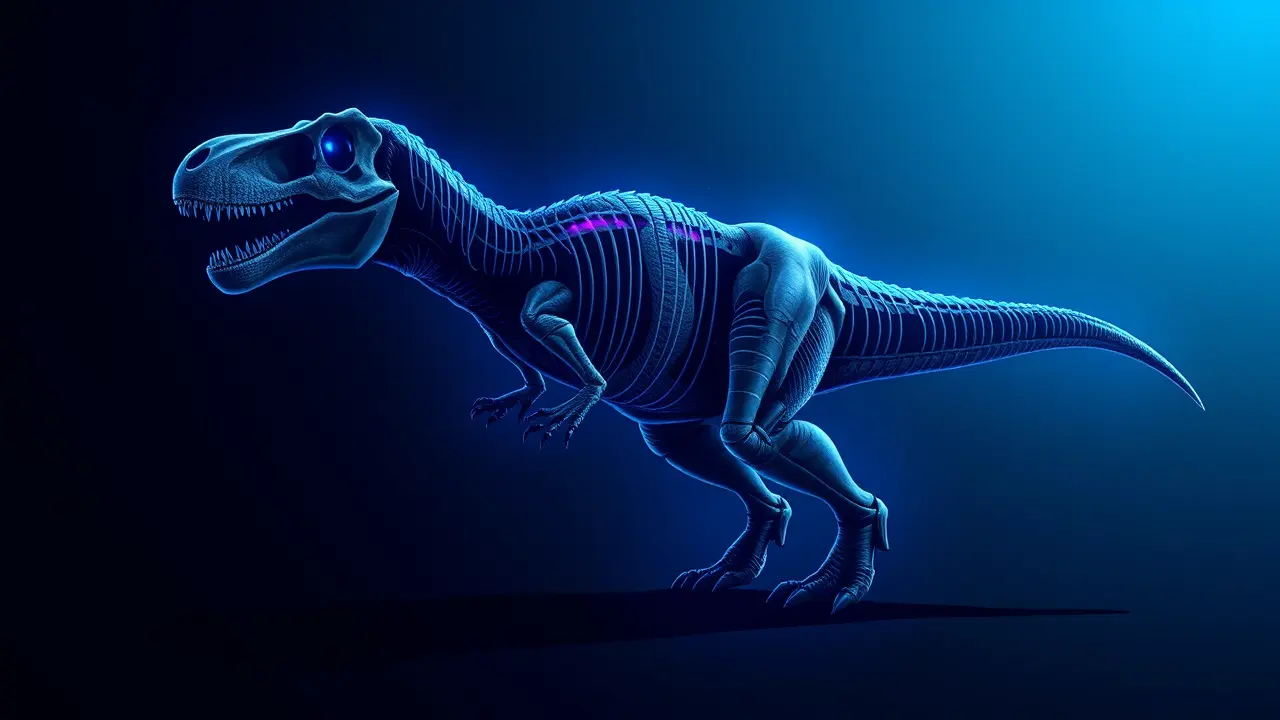
Sciencearchaeology
A prehistoric battle just rewrote T. rex’s story
TH
Thomas Green
22 hours ago7 min read
The long-standing paleontological debate, a scholarly skirmish that has raged for decades in museum halls and academic journals with the intensity of a celestial collision, has reached its definitive conclusion, fundamentally rewriting the story of our planet's most iconic predator. For years, the fossil record presented a tantalizing mystery: were the smaller, more gracile tyrannosaur skeletons, often dubbed Nanotyrannus, merely the teenage form of the mighty Tyrannosaurus rex, a Cretaceous adolescent awaiting its final growth spurt into a bone-crushing behemoth? Or were we looking at a distinct species, a separate branch on the tyrannosaur family tree? This question has now been answered with resounding clarity by a remarkably preserved fossil, a specimen so complete and well-articulated that it leaves no room for doubt.This isn't a juvenile T. rex; it is a mature Nanotyrannus lancensis, a fully grown predator in its own right, forcing a dramatic reinterpretation of the Late Cretaceous ecosystem.Imagine, if you will, the world of 66 million years ago, not as a stage for a single, solitary king, but as a dynamic, complex environment where T. rex, the colossal heavyweight, had to share its throne with a smaller, faster, and far more agile rival.This discovery is akin to finding that Mars had not one, but two vastly different, intelligent civilizations coexisting—it shatters our monolithic view and reveals a richer, more nuanced reality. The evidence lies in the bone histology, the microscopic structure that reveals an animal's age like the rings of a tree, showing this individual had reached skeletal maturity.Its distinct anatomical features—a longer, more built-for-speed shin bone, different tooth structure, and a brain case that doesn't match the growth trajectory of a young T. rex—are not the hallmarks of youth but the blueprints of a different evolutionary path.This revelation sends shockwaves through our understanding of tyrannosaur evolution, suggesting a greater diversity of these apex predators than previously imagined. It paints a picture of an ecological niche partitioned with Darwinian precision: the T.rex, a massive ambush predator built for power, capable of delivering a bite force that could shatter bone, likely preyed on the large, armored herbivores like Triceratops. Meanwhile, Nanotyrannus, sleeker and built like a pursuit hunter, probably hunted the swifter hadrosaurs and other smaller game, filling a role similar to that of a cheetah alongside a lion in the African savanna.This coexistence challenges the simplistic notion of a linear food chain and introduces a web of predator-prey interactions far more complex and fascinating. The implications are profound, forcing a re-examination of countless other fragmentary fossils that were hastily categorized.It opens up new frontiers for research into the competitive and cooperative behaviors between these two titans. Did they actively avoid each other? Was there occasional conflict over carcasses? How did their hunting strategies influence the evolution of their prey? This single fossil, a time capsule from a lost world, doesn't just add a new name to a list; it fundamentally recalibrates our entire model of Cretaceous North America, proving that even in the age of giants, there was room for a sophisticated, swift, and deadly contender to challenge the reign of the thunder lizard king.
#featured
#Nanotyrannus
#T. rex
#dinosaur discovery
#tyrannosaur evolution
#Cretaceous predators
#paleontology
Stay Informed. Act Smarter.
Get weekly highlights, major headlines, and expert insights — then put your knowledge to work in our live prediction markets.
© 2025 Outpoll Service LTD. All rights reserved.